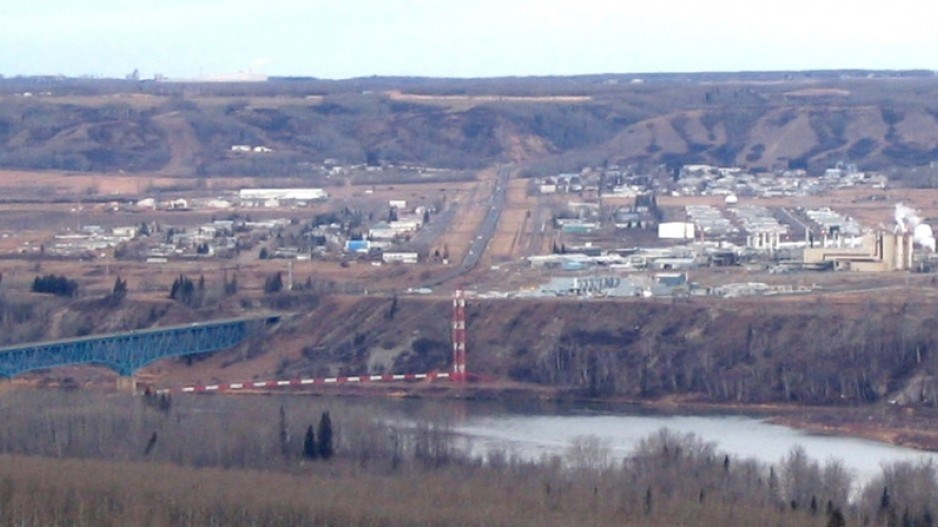The ministry of energy, mines and petroleum resources confirmed it postponed selling the parcels in the Jan. 17 sale, one to the northeast and one to the northwest of the district, after district council raised its concerns last November.
“Engagement with the district is underway,” a spokesman said, working through the process to develop and attach caveats to to allow for exploration and development.
The parcel boundaries extend into the district on both sides of the Alaska Highway, giving potential bidders the right to explore and drill under the community, according to Mayor Rob Fraser.
“I don’t think they’d be so bold as to drill in the community, but certainly they could explore under the community, which is not really our concern,” he said.
“It’s what goes on the surface that’s our concern, because any well bore fluids that come out in an anomaly or upset conditions potentially add to the valley’s airshed.”
Concerns over the airshed date back to 1993, Fraser said, when a number of industrial proposals were stymied because of the belief that the district’s refinery and sawmill had already put the airshed at its limits. A committee was struck to sample and study the issue, but the results found the airshed was neither overtaxed or dangerous, Fraser said. Still, the prevailing perception was that it was, he said.
“With the prevailing winds across community, it led to that perception that Taylor’s airshed was overburdened and an unhealthy place to be,” Fraser said.
The district has made a concentrated effort since then to shift heavy industrial development from the west to east side of the community and away from residential areas.
“For us to see potential oil and gas activity against the western and northern rim of the valley presents a concern for us about the perception of the airshed,” he said.
Stopping the sale of the parcels outright is unlikely, Fraser said. However, the district is willing to work with proponents and the province to brief them on the last two decades of work that has gone into planning because of the valley’s airshed, he said.
“Although we’re opposed to these being sold, we understand the provincial policy and we’re still prepared to work with anybody who moves forward,” Fraser said.
Which is where caveats could come in, and the district is reviewing its options.
“We can put caveats on their sale to require proponents to interact and consult with us. Before they explore, drill, or develop anything we want them coming to talk to us,” Fraser said. “We’ll see where that leads us.”
Meanwhile, the province is putting up seven other parcels of land in its Jan. 17 sale with caveats to consult the district on emergency response planning prior to drilling.
One of those parcels is also within the district’s watershed, and near Fort St. John’s water source, the Peace River, which the province says will require precautions to prevent contamination.
“We have no specific concerns about water,” Fraser said.
“It’s a general caveat put in there so they know that when they’re taking this on, when they buy this, that they’re going to have to be talking to us about that stuff.”
The province pulled in $173 million from the sale of petroleum and natural gas rights in 2016, a dramatic rebound from a record low of just $15 million in 2015.



